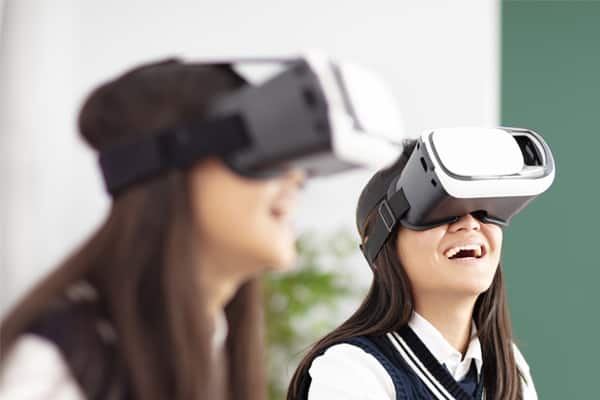Virtual reality has the potential to transform learning through an immersive experience. It can be used to create customized content, which can help learners learn in a new way. VR and 360 video content are becoming more accessible.
But with so many different headsets available, how can teachers make the most of this technology? Read on for insights into the impact of virtual reality on education, and ways you can use it to enrich your curriculum.

What is virtual reality in education?
Virtual reality (VR) is the creation of a simulated environment, sometimes called the “digital realm.” VR’s potential to transform education was first realized in the 1990s when researchers began creating tools to let people experience virtual tours of museums, travel to remote locations, or even experience surgery.
Several challenges had to be overcome before VR could be used in education. First, VR headsets had to become more affordable. Second, computer programs had to become more user-friendly. Finally, educators needed more training to help them learn how to use VR. Today, VR has become more accessible, and more affordable. Still, it remains expensive for most schools and districts to use VR.
How does virtual reality work in education?
VR involves creating a simulated environment, usually called the “digital realm.” The digital realm can include places like museums and remote locations, or it can be a simulation of an architectural model or other subject matter. Users wear a headset to see the simulated environment, and some systems let users interact with the digital realm by wearing gloves or other types of sensors.
These systems can be used in a variety of ways: Immersive learning environments let users experience virtual tours, travel to remote locations, or learn about subjects like architecture, archaeology, or history. They can also be used to let people experience surgeries and other medical procedures. This allows users to explore things they can’t experience in the real world, and it allows educators to show students things they might not otherwise be able to show them.
Augmented reality, on the other hand, blends the digital and the real worlds. AR systems work with mobile devices, letting users see digital information on top of real-world images. AR can also let users “see” digital information, like a 3D model of a building.

Use of Virtual Reality in Education
VR can be used in a variety of ways in education, from immersive learning environments to virtual tours to simulations. VR allows students to experience things in a new way and thus can help learners grasp concepts in a new way. For example, students can travel to remote locations to learn about issues like climate change or how modern cities are built.
They can also experience museums in a way that lets them feel like they are there and lets them see things that would be difficult or impractical to show in a real museum. VR can also be used to let students get a better understanding of topics like geography or history, or let them explore things that are difficult to model in 3D, like the inner workings of a car.
Key Benefits of VR for Learning
VR can be used to create customized content, which means users don’t have to view the same content in the same way as everyone else. This can help learners grasp concepts in new ways, and it can also help learners with specific learning needs. For example, users can customize an experience, so that they see information in a way that helps them understand the information better, or they can be given additional resources that help them understand the information better.
VR can also be used to make content more accessible. A lot of VR content is created for high-end devices like the HTC Vive or the Oculus Rift. This means that a lot of VR content is difficult for people with disabilities to view. VR can be used to make content more accessible, by creating custom experiences designed for people with disabilities. VR can also be used to create customized content that is more inclusive, by making VR content that is more accessible to other groups, like people with disabilities or other groups.

Key Disadvantages of VR in Education
VR’s potential to transform education has been recognized since the 1990s. However, VR headsets are expensive and the technology itself can be complicated for users. This means that many schools and districts aren’t using VR in their curricula. VR can also be difficult for users to grasp, meaning some learners may not be able to grasp the concepts well enough to benefit from this technology.
This can also make it challenging for people with disabilities to use VR. VR headsets are also expensive, and they can break easily. This means that VR devices have to be replaced often, which can be expensive. VR can also be expensive to use over longer periods.
Bottom line
Virtual reality has the potential to transform learning through an immersive experience. It can be used to create customized content, which can help learners learn in a new way. VR and 360 video content are becoming more accessible. But with so many different headsets available, how can teachers make the most of this technology?
Through research on the impact of VR on education, researchers have identified several ways in which VR can be used to create a better learning experience. VR can be used to make content more accessible, make content more inclusive, and allow users to customize their experiences so that they don’t have to view the same content in the same way as everyone else.








